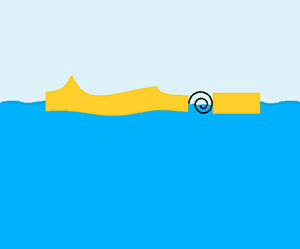Published online by Cambridge University Press: 30 August 2023

The eigenmodes and eigenfrequencies of two-dimensional elastic structures in contact with a liquid are investigated within the linear theory of hydroelasticity. The shapes of the structural vibrations and the hydrodynamic loads acting on the structure are calculated at the same time. The wet modes are obtained as superpositions of the dry modes of the structure, where the coefficients are solutions of a matrix equation with the hydrodynamic loads being represented by an added-mass matrix. The added-mass matrix of a homogenous elastic plate is calculated analytically through Bessel functions. Added-mass matrices of complex structures are obtained using representations of the dry modes through dry modes of the homogeneous plate of the same length. Relations between wet and dry modes and their frequencies depending on parameters of the problems are studied. The structure could be made of several plates, connected or not, completely or partially wetted, and of any variable thickness and rigidity. The main contribution to a wet mode comes from the corresponding dry mode. The wet frequency is below the corresponding dry frequency with their ratios being weakly dependent on the properties of the structure. This finding is new. The obtained added-mass matrices are suggested to use in problems of hydroelastic slamming for any geometry of impacting elastic body and any distributions of its elastic characteristics. The matrices can be also used to design an interface between hydrodynamic and structural solvers in numerical analysis of hydroelastic slamming.